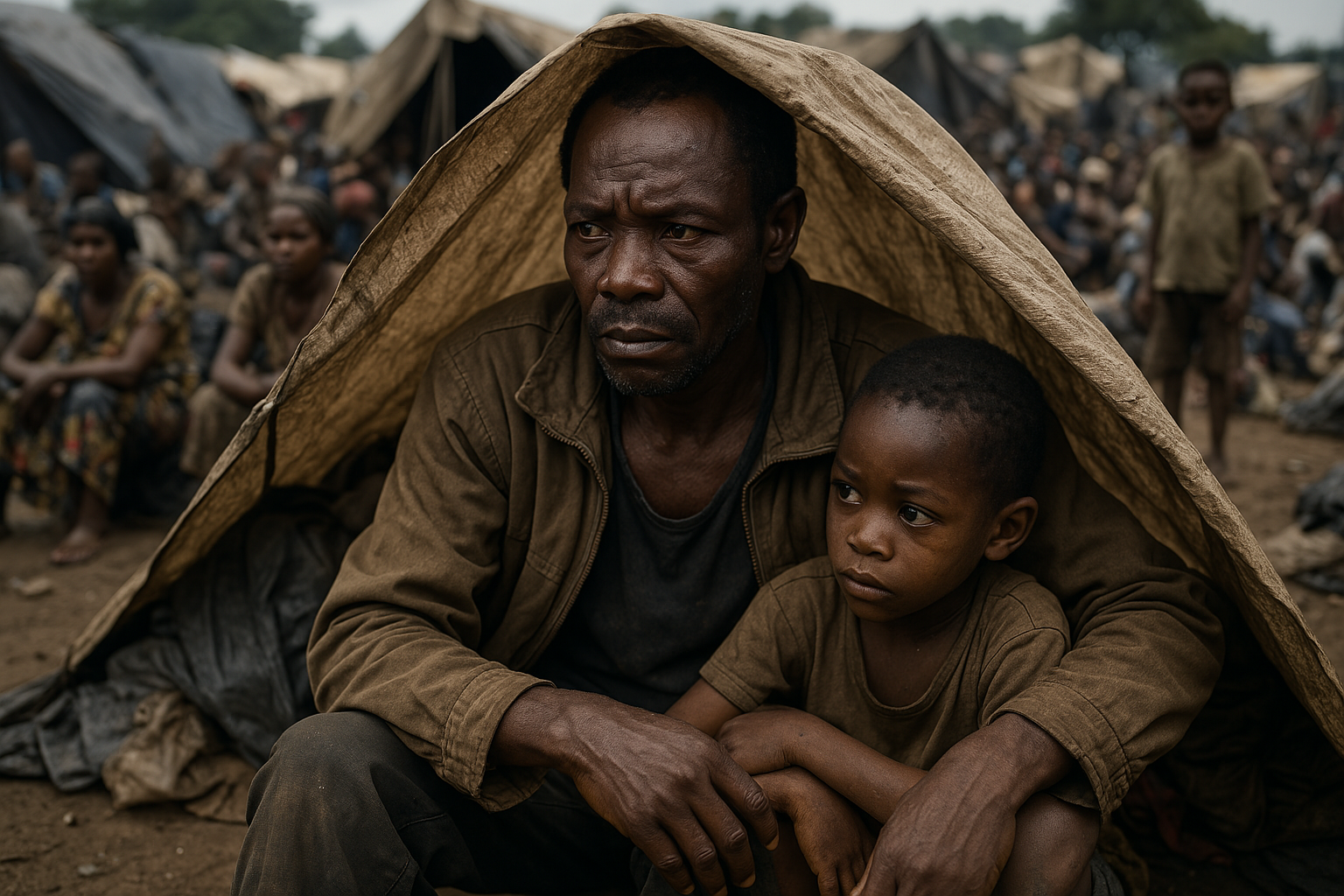WFP and FAO warn urgent global response is needed to avert catastrophe as hunger surges
DRC Faces Worst Hunger Crisis Ever as Conflict and Inflation Push 28 Million into Acute Food Insecurity.

The Democratic Republic of the Congo (DRC) is grappling with an unprecedented food crisis, as new data released by the Food and Agriculture Organization (FAO) and the United Nations World Food Programme (WFP) reveals that an alarming 28 million people—more than one in four Congolese—are currently facing acute food insecurity (IPC Phase 3 or higher). This is the highest number ever recorded in the country’s history and marks a 2.5 million increase in just three months, following a surge in violence that began in December 2024.
Among those affected, 3.9 million are in IPC Phase 4, signifying emergency levels of hunger, where food consumption gaps are so severe that lives and livelihoods are at imminent risk.
A Crisis Deepening Across DRC
The past six months have seen worsening conditions across the country due to the deadly combination of escalating armed conflict, soaring food prices, a crumbling economy, and massive displacement. Millions of families, especially those in eastern DRC, are now teetering on the brink of catastrophe, struggling to access food, health services, and shelter.
In the volatile eastern provinces of North Kivu, South Kivu, and Ituri, over 10 million people are acutely food insecure, including 2.3 million in IPC Phase 4. Violence has intensified in recent months, leading to new waves of displacement. Many have fled their homes with nothing, losing their land, livestock, and access to markets and humanitarian aid.
Internally displaced people (IDPs) are among the most at risk. Over two million displaced individuals are experiencing acute hunger, including an estimated 738,000 in emergency conditions.
“The humanitarian situation in the DRC is deteriorating at an alarming rate,” said Eric Perdison, WFP’s Regional Director for Southern Africa and interim Country Director for the DRC. “Families who were already struggling to feed themselves are now facing an even harsher reality. We’ve resumed operations in some areas, but much more is needed—and urgently.”
Economic Collapse and Skyrocketing Prices
The conflict is not the only driver of hunger. Economic collapse and high inflation have made basic necessities unaffordable for millions. The Congolese franc has sharply depreciated, and many banks have closed or reduced operations, cutting off access to cash. This has had a devastating impact on purchasing power.
Staple food prices have surged across the country. As of early 2025, maize flour, cassava flour, and palm oil have risen by as much as 37% compared to December 2024, further exacerbating food insecurity for families who were already living on the edge.
Transport and trade routes have been severely disrupted due to insecurity, making it harder for food to reach local markets. In many regions, humanitarian aid workers face extreme difficulty accessing vulnerable populations due to threats of violence and insecurity.
Emergency Aid and Long-Term Resilience
Despite the challenges, WFP and FAO are scaling up efforts to respond to the growing needs. In the first months of 2025, WFP has reached 464,000 people with food, cash-based assistance, and nutrition treatment in accessible regions. In Bunia alone, 237,000 people have received aid.
FAO, meanwhile, is focusing on restoring food production capabilities for affected communities. Emergency agricultural support—such as seeds, tools, and training—is being provided to help households restart farming and reduce dependence on food aid.
“The current situation is dire for the population, as harvests are lost, food prices soar, and millions of people face worsening hunger,” said Athman Mravili, FAO Representative ad interim. “We urgently need more resources to expand emergency food production and restore livelihoods. Our goal is to support 1.6 million people in North and South Kivu, Ituri, and Tanganyika.”
In parallel with emergency operations, both agencies are investing in long-term solutions to build community resilience and support recovery. These include nutrition education, support for local markets, sustainable farming initiatives, and social protection programs designed to help families withstand future shocks.
A Call for Global Support
WFP’s 2025 plan aims to reach 6.4 million people in the DRC with life-saving food and nutrition assistance, but the operation is underfunded. To sustain activities and respond to rising needs, WFP urgently requires US$399 million over the next six months.
Both WFP and FAO are calling on the international community to increase funding and support humanitarian access in the DRC to prevent the crisis from becoming a full-blown catastrophe.
“This is one of the world’s largest and most complex hunger emergencies,” said Perdison. “Without immediate support, millions more could slip into hunger and malnutrition. We cannot afford to look away.”
As violence continues, and economic instability deepens, time is running out for millions in the DRC. A coordinated global response is critical to saving lives and helping the country begin the long road to recovery.
- READ MORE ON:
- World Food Programme
- Food and Agriculture Organization










